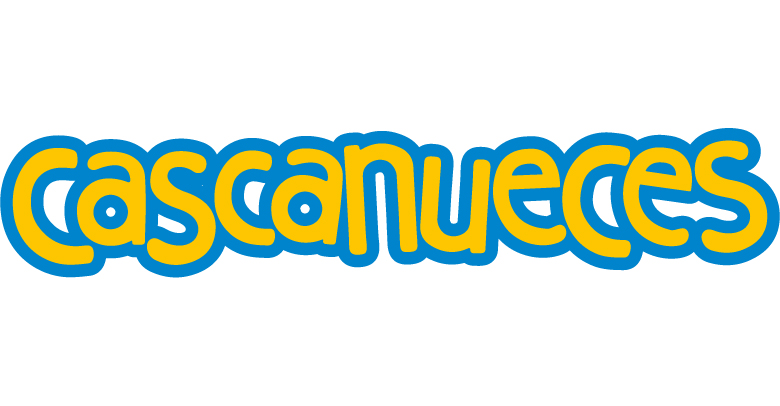Ketoconazole dosages: 200 mg
Ketoconazole packs: 30 pills, 60 pills, 90 pills, 120 pills, 180 pills, 270 pills, 360 pills
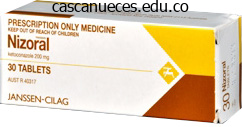
Purchase 200mg ketoconazole fast delivery
Hyperglycemia is the most frequent metabolic derangement in critically unwell neurological sufferers. There is stable evidence that hyperglycemia prompts neurotoxic oxidative and inflammatory responses after acute ischemia. In sufferers with acute ischemic stroke, hyperglycemia has been related to increased threat of hemorrhagic transformation and hyperacute worsening and decrease charges of recanalization after thrombolysis (Alvarez-Sabin et al. It has additionally been discovered to correlate with infarct growth and worse practical consequence (Baird et al. Intensive insulin remedy to keep strict normoglycemia is not really helpful for critically unwell sufferers, after this follow led to elevated mortality in a big randomized trial (Finfer et al. However, strict blood sugar management may lower the speed of critical sickness polyneuropathy (Van den et al. Therefore, the treatment of hyperglycemia must be significantly cautious in sufferers with acute brain illness, and serum glucose concentrations under a hundred mg/dL should be prevented. FeverandInfections Fever in a affected person with acute brain illness calls for immediate diagnostic investigation to decide its cause and symptomatic therapy to keep away from the deleterious impact of hyperthermia on the injured mind. Experimental models have persistently shown that even delicate hyperthermia worsens cerebral damage after ischemia or trauma (Baena et al. Fever has been associated with poor useful consequence in sufferers with ischemic infarction (Reith et al. Osteomyelitis and discitis should be included in the differential diagnosis of fever after backbone surgical procedure. Empirical antibiotics could also be discontinued after 3 days if no infection is documented. It is all the time prudent to consider changing indwelling catheters (central venous, arterial, bladder, ventricular) in persistently febrile patients. Signs of anticonvulsant hypersensitivity syndrome (rash, lymphadenopathy, hepatomegaly, eosinophilia, elevation of liver transaminases) must be readily acknowledged, since failure to discontinue the culprit medication promptly may have the devastating consequence of Stevens�Johnson syndrome (Schlienger and Shear, 1998). In chronically immobile sufferers (especially those with spinal twine injury), heterotopic ossification could also be a cause of persistent fever; it could be suspected by marked elevation of the C-reactive protein and sedimentation price and confirmed by bone scintigraphy. Learning to recognize it may be very helpful for avoiding overutilization of checks and antibiotics. Patients with central fever often have prolonged hyperthermia with failure to return to normal body temperature, as opposed to the spikes of fever adopted by normothermia usually observed with infections. Antipyretic medicines (acetaminophen, ibuprofen) are sufficient in milder circumstances. However, mechanical cooling strategies should be added in patients with extra extreme or refractory hyperthermia. Ice packs, air- or water-circulating cooling blankets, and efficient cooling vests are various methods of conductive cooling (Seder and Van der Kloot, 2009). Endovascular cooling units may offer higher control of temperature modulation however require placement of a central venous catheter (Seder and Van der Kloot, 2009). Options for prevention of thromboembolic complications in immobilized patients embody intermittent pneumatic compression and antithrombotics. Evidence helps the usage of subcutaneous anticoagulants for many sufferers with acute ischemic stroke (Jauch et al. Enoxaparin (40 mg daily) was discovered to be superior to unfractionated heparin (5000 models twice daily) in a single randomized controlled trial of sufferers with acute ischemic stroke (Sherman et al. The optimal hematocrit level in critically sick, neurological patients has not been adequately studied and probably varies in accordance with the underlying major disease process. Mild hemodilution may enhance the rheological properties of the cerebral circulation, but excessive anemia might compromise oxygen delivery. Transfusions are solely indicated for common critically sick sufferers when the hemoglobin concentration is lower than 7 g/dL. The appropriateness of this conservative apply in patients with acute mind damage (who could additionally be notably delicate to local or regional hypoxia) stays to be established. Heparin-induced thrombocytopenia may be diagnosed by the presence of circulating serum antibodies to platelet issue 4. In patients with heparininduced thrombocytopenia who still have indication for continuing therapeutic anticoagulation, a direct thrombin inhibitor (recombinant hirudin or argatroban) ought to be used instead of heparin.
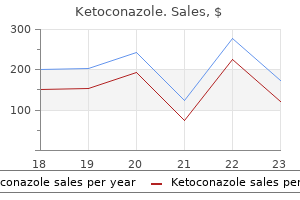
Cost of ketoconazole
As the tumor grows, it protrudes via the internal auditory meatus, stretches adjacent nerves over the floor of the mass, and deforms the cerebellum and brainstem. By far the most common signs related to acoustic neuromas are slowly progressive unilateral hearing loss and tinnitus from compression of the cochlear nerve. Rarely, acute listening to loss occurs, probably from compression of the labyrinthine vasculature. Vertigo occurs sometimes, however roughly half of sufferers with an acoustic neuroma complain of delicate imbalance or disequilibrium. An epidermoid tumor, meningioma, facial nerve schwannoma, or metastatic disease also can cause mass lesions within the cerebellopontine angle. The audiometric pattern is variable; nevertheless, patients with cerebellopontine angle tumors causing hearing loss usually have poor speech discrimination, SensorineuralHearingLoss Sensorineural listening to loss results from lesions of the cochlea, the auditory division of the acoustic nerve, or each and leads to incapability to normally perceive each bone- and air-conducted sound. For high-frequency tones, only sensory cells in the basilar turn are activated, but for low-frequency tones, all sensory cells are activated. Therefore, with lesions of the cochlea and its afferent nerve, the listening to ranges for various frequencies are normally unequal, and the part relationship between completely different frequencies could also be altered. A pure tone could additionally be heard as noisy, Neuro-otology: Diagnosis and Management of Neuro-otological Disorders 597 acoustic reflex decay, and pure tone decay rather than a marked asymmetry of pure tones. An air/bone gap, with preserved acoustic reflexes, may be recognized on commonplace audiograms. The Weber tuning fork test sometimes lateralizes to the affected ear, and the Rinne turning fork check could present bone conduction greater than air conduction (see Specific Disorders Causing Vertigo). Otosclerosis Otosclerosis is a metabolic disease of the bony labyrinth that often manifests by immobilizing the stapes, thereby producing a conductive listening to loss. Although conductive listening to loss is the hallmark of otosclerosis, a combined conductive-sensorineural hearing loss sample is frequent. Although otosclerosis is primarily a dysfunction of the auditory system, vestibular signs and signs are more widespread than usually appreciated. Other causative lesions might include glomus jugulare tumors, ectatic basilar artery with brainstem compression, or petrous apex cholesterol granuloma. Auditory brainstem response testing shows a sensitivity and specificity round 70%, with a false-positive fee of 77%, however a false-negative rate of 29% (Cueva, 2004). Acoustic neuromas may be present in around 5% of patients with this presentation (Aarnisalo et al. Focal ischemia to the cochlea, cochlear nerve, or the foundation entry zone can even cause an abrupt lack of hearing over several minutes. In the setting of a affected person at risk for stroke, this cause ought to be thought of early, as a end result of it could be the harbinger of basilar artery occlusion (Toyoda et al. Sudden-onset bilateral listening to loss can rarely end result from bilateral lesions of the primary auditory cortex within the transverse temporal gyri of Heschl. Deficits can vary from auditory agnosia for speech or nonspeech sounds, with relatively regular listening to thresholds, to rare instances of cortical deafness characterised by markedly elevated pure-tone thresholds. About onethird of people with listening to loss can attribute at least part of the loss to noise publicity. Typically, levels of noise exposure larger than 85 dB are required to cause the adjustments within the ear induced by loud noise. Examples of noise larger than 85 dB which are frequent sources of publicity embrace bikes, firecrackers, factory machinery, and music concerts. GeneticDisorders Many genetic causes of listening to loss have been recognized, together with syndromic and nonsyndromic phenotypes and inheritance types which might be autosomal dominant, autosomal recessive, and mitochondrial. HearingLosswithAge the bilateral hearing loss commonly related to advancing age known as presbycusis. It could embrace conductive and central dysfunction, but the most consistent impact of growing older is on the sensory cells and the neurons of the cochlea. The typical audiogram look in sufferers with presbycusis is that of symmetrical listening to loss, with the tracing gradually sloping downward with increasing frequency. The most consistent pathology related to presbycusis is a degeneration of sensory cells and nerve fibers on the base of the cochlea. Ototoxicity the commonest medicines inflicting hearing loss are aminoglycoside antibiotics, loop diuretics, and cisplatin. Impaired elimination of these drugs, such as occurs in patients with renal insufficiency, predisposes to ototoxicity.
Order ketoconazole in united states online
These positions can cause the particles to reaccumulate within the posterior semicircular canals. Randomized managed trials have found that vestibular bodily therapy improves outcomes in sufferers with unilateral vestibulopathy, although very few of those research were particularly carried out in a vestibular neuritis population (Hillier and McDonnell, 2011). A course of corticosteroids has been shown to improve recovery of the caloric response but has not been shown to enhance practical or symptom outcome (Fishman et al. The early treatment of Meniere disease continues to be a low-salt diet and diuretics, although the proof to support these interventions is weak (Minor et al. Minimally invasive intratympanic gentamicin injections can be utilized for patients with debilitating symptoms. Usual grownup beginning dosage; maintenance dosage can be increased by a factor of 2-3. Anticholinergic or antihistamine medication are often efficient in treating sufferers with gentle to average vertigo, and sedation is minimal. If the patient is especially bothered by nausea, the antiemetics prochlorperazine and metoclopramide may be efficient and mixed with different antivertiginous drugs. Cochlear implants have revolutionized the approach to remedy of profound sensorineural loss. The management of tinnitus remains troublesome, and particular therapies are often ineffective. Patients with a selected trigger for the issue often have probably the most potential for enchancment. Idiopathic high-pitched tinnitus may diminish with avoidance of caffeine, different stimulants, and alcohol. For patients with insupportable idiopathic tinnitus, a trial of a tricyclic amine antidepressant may be of profit. False-positive magnetic resonance imaging of small internal auditory canal tumors: a scientific, radiologic, and pathologic correlation study. Benign positional nystagmus: a study of its three-dimensional spatio-temporal characteristics. Ambulatory care visits to doctor workplaces, hospital outpatient departments, and emergency departments: United States, 1999�2000. Magnetic resonance imaging and computed tomography in emergency evaluation of patients with suspected acute stroke: a prospective comparability. Magnetic resonance brain imaging in folks with dizziness: a comparison with nondizzy individuals. Evaluation of investigations to diagnose the trigger of dizziness in aged people: a community primarily based controlled research. Practice parameter: therapies for benign paroxysmal positional vertigo (an evidencebased review): report of the Quality Standards Subcommittee of the American Academy of Neurology. Assessment: vestibular testing strategies in adults and youngsters: report of the Therapeutics and Technology Assessment Subcommittee of the American Academy of Neurology. Spinocerebellar ataxia type 6 with positional vertigo and acetazolamide responsive episodic ataxia. Familial positional downbeat nystagmus and cerebellar ataxia: scientific and pathologic findings. Late-onset pure cerebellar ataxia: differentiating those with and without identifiable mutations. Randomized medical trial for geotropic horizontal canal benign paroxysmal positional vertigo. Randomized clinical trial for apogeotropic horizontal canal benign paroxysmal positional vertigo. A genome-wide linkage scan of familial benign recurrent vertigo: linkage to 22q12 with proof of heterogeneity. Cerebellar infarction presenting isolated vertigo: frequency and vascular topographical patterns. Scale for the evaluation and score of ataxia: Development of a model new clinical scale. A medical and genetic research in a large cohort of patients with spinocerebellar ataxia sort 6. Head impulse check in unilateral vestibular loss: Vestibulo-ocular reflex and catch-up saccades.

Purchase cheap ketoconazole
Magnetic stimulation on the posterior neck or the dorsal backbone activates spinal roots on the level of the intervertebral foramen. The stimulus evokes an orthodromic volley within the motor nerves, which produces a brief latency response within the muscle (M wave). In addition, an antidromic volley travels again to the spinal twine thrilling the spinal motoneurons, and an efferent volley travels down to the motor nerve, inflicting a late excitation of the muscle generally recognized as the Fwave. Total peripheral motor conduction time may be estimated as (F+M�1)/2 (1 is the time due to the central delay at the level of motoneuron). Other methods are also used for motor threshold and the adaptive methodology will be the most accu fee (Groppa et al. Test stimulation [b] with the same stimulation depth is utilized at eighty ms after the conditioning stimulation [a]. This underlying physiology is poorly understood, but seems to contain neurons in addition to the core region activated at threshold. The slope of the recruitment curve is said to the number of corticospinal neurons that may be activated at a given stimulus intensity, primarily indirectly by way of corticocortical connec tions. This finding suggests that the recruitment curve might symbolize the excitability of much less excitable or peripherally situated neurons somewhat than highly excitable core neurons, or the connections between them. The second pulse is assumed to excite the preliminary axon segments of excitatory interneurons, that are depolarized by excitatory postsynaptic potentials from the first pulse with out firing an action potential. Cerebellar stimulation is assumed to activate Purkinje cells within the cerebellar cortex, resulting in inhibition of the deep cerebellar nuclei such because the dentate nucleus, which have a disynaptic excitatory pathway to the motor cortex by way of the ventral thalamus. This protocol has been proven to induce plastic changes of excita bility in the human motor cortex, just like associative long term potentiation in experimental animals (Classen et al. These observa tions recommend that motor cortex excitability is dependent upon the steadiness between completely different inhibitory mechanisms, a few of that are under basal ganglia management. For instance, motor threshold is decreased in untreated patients with idiopathic generalized epilepsy. A motor threshold greater than regular is usually associated with the signs of spas ticity. This tech nique has been used to consider cortical reorganization in numerous situations. In stroke sufferers, it has been demon strated that cortical reorganization of the motor output still happens up to several months after insult. However, these changes are totally different among the many various types of cerebel lar degeneration (Schwenkreis et al. Neuromodulation and Transcranial Magnetic Stimulation 397 enlargement of the motor maps of the recovering affected half. An elevated motor threshold can also be incessantly noticed in sufferers with multiple sclerosis. This raises hope that stimulating elsewhere inside this circuit might obtain similar results. This persistence implies useful and structural adjustments in synaptic energy, which constitutes the essential mechanism in plasticity. Plasticity is the power of the mind for change and underlies regular brain features similar to motor learning or adaptation to an environmental change. Plasticity can also be responsible for spontaneous recovery after mind harm, corresponding to stroke. Generally, early plastic modifications are alterations in synaptic strength and later changes will embrace anatomical modifications similar to sprouting and alterations of dendritic spines. Plastic modifications can occur solely within a certain vary, which is referred to as homeostatic plasticity (Abraham and Tate, 1997; Bienenstock et al. The stimulation protocol defines the polarity of results which may be excitatory or inhibitory. There are patterned stimulation protocols and some derive their rationale from research in mind physiology. Simul taneous recordings from muscle tissue innervated by completely different mye lomers might help outline the spinal degree the place the lesion involves. In a study recruiting large number of patients with cervical myelopathy (Lo et al. These are all strategies of homosynap tic plasticity where exercise of a synapse will result in its own change. These stimulation results have been explored principally in the motor cortex in the healthy young and may not directly be extrapolated to results in mind problems and in nonmotor areas.
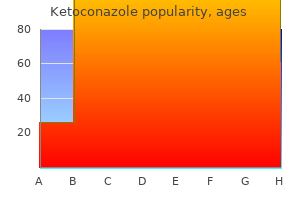
Buy ketoconazole 200 mg overnight delivery
B, Axial images of the neck after distinction administration is unable to precisely decide the diploma of residual luminal narrowing. Widening the window settings leads to overestimation of stenosis, and a later digital subtraction angiography demonstrated solely delicate stenosis. Falsepositive and false-negative aneurysms are more generally depicted on the skull base and middle cerebral artery. Falsepositive aneurysms are sometimes attributable to infundibula and arterial loops (Cho et al. The addition of 3D reconstructions has been shown to increase diagnostic efficiency and research performed on 3T demonstrated a development towards better accuracy (Sailer et al. A, Computed tomographic angiography supply image nondiagnostic for residual lumen as a result of streak artifacts. D, Coronal maximum-intensity projection image demonstrates continuity of move into neck and dome remnants of coiled aneurysm (arrows). For the detection of any aneurysm remnant, the sensitivity was 90%, 85%, 88%, and 90% for 1. These artifacts could probably result in artificially smaller aneurysm remnants on 1. A, Magnetic resonance angiogram (lateral view) produced from 80 sequential twodimensional time-of-flight coronal sections covering posterior half of the head. Flow-related signal is noticed in transverse (open arrows) and sigmoid sinuses but not in superior sagittal sinus (closed arrows) or straight sinus. Short segments of vessels projecting over posterior course of superior sagittal sinus characterize patent superficial cerebral veins lateral to the sinus. B, Postgadolinium midsagittal T1-weighted picture reveals hypointense signal in superior sagittal sinus and enhancing margins. Combined with the leads to A, findings are in maintaining with the presence of intraluminal thrombus. This situation is finest approximated using coronal sections to image the sagittal, straight, and transverse sinuses (as properly as the inner cerebral veins, basal veins of Rosenthal, and to a lesser degree, the vein of Galen). The acquisition of coronal sections may be augmented by the acquisition of oblique sagittal sections to permit better circulate enhancement in the posterior parts of the transverse sinuses and the cortical veins draining into the superior sagittal sinus. A widespread diagnostic pitfall of the technique is the presence of flow gaps in the transverse sinus. The 2D phase-contrast technique is limited by gradient heterogeneity, eddy currents, aliasing artifacts, and lower spatial decision. These contrast-enhanced strategies, although, have two potential limitations: (1) both techniques contain fast acquisition (1�2 minutes per 3D volume), so the depth of the intravascular sign is decided by the timing of the contrast infusion relative to information acquisition, and (2) continual thrombus might improve with gadolinium and mimic a patent lumen. Eloquent areas include sensorimotor, language, visible, thalamus, hypothalamus, internal capsule, brainstem, cerebellar peduncles, and deep cerebellar nuclei. Magnetic resonance angiograms (axial maximum-intensity projection images) of sellar region and circle of Willis were acquired with three-dimensional time-of-flight method (no gadolinium enhancement). Flow-related signal in left cavernous sinus (closed arrow), sphenoparietal sinus (open arrow), and cerebral veins results from shunting of high-flow-rate arterial blood by way of fistula. Flow-related signal within the left orbit is caused by the ophthalmic artery (arrowheads), not the superior ophthalmic vein, which was discovered by catheter angiography to be thrombosed at the time of presentation. High temporal decision is obtained by sampling the central zones of the k-space at a extra frequent rate than peripheral zones. The diagnostic imaging features of venous malformations (angiomas, developmental venous anomalies) are well shown on postgadolinium T1-weighted spin-echo pictures. These options include the radially oriented collection of small vessels (medullary veins) that produce a caput medusa or spokewheel configuration. This is contiguous with a large trunk vein that drains into either subependymal or superficial cerebral veins or a dural sinus. Improved noninvasive localization of the fistula degree doubtlessly expedites the next invasive catheter angiography research. The artery of Adamkiewicz and the anterior spinal artery have been recognized and differentiated from the good anterior radiculomedullary vein, even in patients with considerably altered hemodynamics from aortic disease.
Syndromes
- Intravenous therapy can treat dehydration.
- Fever
- Serum insulin-like growth factor 1 (IGF-1)
- Syphilitic meningitis
- Disorders associated with excessive daytime sleepiness
- Theophylline

Discount 200mg ketoconazole with visa
Three-dimensional carotid ultrasound is one other emerging technique that makes use of post-processing imaging software to semiautomatically reconstruct 3D plaque volume and surface recognized in B-mode and with the assist of colour (Makris et al. The optimal noninvasive imaging technique for determining severity of carotid artery stenosis stays unsure. For recognizing occlusion, duplex carotid ultrasound had a sensitivity of 96% and a specificity of one hundred pc (Nederkoorn et al. The identical strategies described for use within the carotid arteries can be utilized to research the vertebral arteries and the proximal subclavian or innominate arteries. As such, there ought to be duplex Doppler and B-mode imaging of those arterial segments. The vertebral artery can nearly all the time be evaluated in the pretransverse and intertransverse cervical section of C5�C6, whereas the origin may be studied solely on the right in 81% and on the left in 65% of instances. As with the carotid system, spectral analysis offers insight into proximal and distal illness. Another confounding factor is contralateral occlusive disease, related to elevated carotid quantity circulate which may result in an overestimation of the severity of stenosis. Measurement of quantity move rate using color velocity imaging quantification with a shade M-mode display of the circulate velocities throughout the common carotid artery and monitoring of the vessel diameter. Studies have proven that the accuracy of duplex ultrasound examination is a lot better from accredited versus nonaccredited laboratories (Latchaw et al. These pulsed-wave Doppler instruments have an efficient insonation depth range of three. At an insonation depth of fifty mm, the pattern volume is normally 8 to 10 mm axially and 5 mm laterally. Depending on the place of the window, the probe often has to be tilted frontally to detect these vessels. Flow in the distal vertebral artery and proximal to mid-portions of the basilar artery may be detected; its path is away from the probe in these arterial segments. A considerable degree of natural variation occurs in the position and caliber of those arteries, making insonation sometimes troublesome. The ophthalmic artery and carotid siphon could be studied through the orbital window. Flow in the ophthalmic artery is towards the probe and has a high resistance sample. The power output of the instrument must be decreased when insonating by way of the orbital window, because prolonged exposure to high-intensity ultrasound has been related to cataract formation. Thus, based on the overall information of the location of intracranial arteries and circulate direction, a complete map of the basal arteries could be generated. This map is clinically useful as a outcome of widespread pathological conditions affecting the intracranial arteries. The use of contrast-enhanced color-coded duplex sonography may be especially useful in this context. Transcranial Doppler can even assist in monitoring the impact of thrombolytic agents. Ultrasound vitality has also been noticed to speed up enzymatic fibrinolysis, probably by permitting elevated transport of drug molecules into the clot and promoting the movement of fluid throughout the thrombus. This observation has led to studies that allow for real-time monitoring of vessel recanalization while potentially providing additional therapeutic profit from the ultrasound power (Alexandrov et al. Administration of microbubbles and/or lipid microspheres stays beneath investigation and will assist transmit vitality momentum from an ultrasound wave to residual move to promote further recanalization, thereby enhancing the impact of ultrasound on thrombolysis (Alexandrov et al. Early research initially famous increased charges of symptomatic intracranial hemorrhage highlighting the want to determine minimum and safe quantities of ultrasound vitality essential to improve thrombolysis (Eggers et al. Reports ought to handle the severity of stenosis based mostly on Doppler flow-velocity measurements. There additionally must be info supplied about the presence of any plaque, in addition to the morphology, based mostly on high-resolution B-mode imaging. Results of carotid ultrasound testing should then be integrated with other available testing modalities if further info is required. However, the most effective algorithm for evaluation could differ, relying on the providers and expertise available at each medical heart. Follow-up studies usually show spontaneous recanalization of beforehand occluded segments. The latter can be detected inside hours from the onset of symptoms, the majority of symptomatic occlusions being recanalized inside 2 days and followed by a interval of hyperperfusion.
Order genuine ketoconazole on-line
The ache is sym metrical, involving the shoulder, neck, and hip girdle, and is greatest after inactivity and sleeping. Polymyalgia rheumatica could be associated with temporal arteritis and an elevated sedi mentation rate (>40 mm/h). Pain improves within a quantity of days after treatment with corticosteroids (prednisone, 20 mg/day). The diagnosis of continual fatigue syndrome requires signs of persistent and unexplained fatigue. Four or extra symptoms should occur for the 6 months after the onset of fatigue, includ ing impaired reminiscence or focus, sore throat, tender cervical or axillary lymph nodes, muscle pain, ache in a number of joints, new complications, unrefreshing sleep, or malaise after exertion. Patients may notice fatigue and disturbed sleep, headache, cognitive issue, and aggravation of signs by exercise, anxiousness, or stress. The lack of cutaneous Cfibers, and probably muscle nociceptor abnormalities, could underlie the pathophysiology of fibromy algia. Several research have shown impaired smallfiber func tion as demonstrated by abnormalities in intraepidermal nerve fiber density, quantitative sensory testing, and pain associated evoked potentials (Oaklander et al. In addition, there are consistent abnormalities on questionnaires and ranking scales designed to evaluate patients with neuropathy. Decreasing the central sensitization to pain is the primary target of the pharmacological remedy of fibromyalgia and continual ache. Medications embody tricyclic antidepressants, selective serotonin and norepinephrine reuptake inhibitors, gabapen tin, and pregabalin. Lowimpact aerobic exercise training could reduce pain and pressure thresholds over tender points. For example, hip disease can suggest the misdiag nosis of a painful proximal myopathy with obvious leg weak ness. In this case, external or inside rotation of the thigh generally evokes proximal ache. Serum creatine kinase after train: Drawing the road between physiological response and exertional rhabdomyolysis. Objective proof that smallfiber polyneuropathy underlies some diseases currently labeled as fibromyalgia. A maternal history of spontaneous abortion, fetal demise, or different offspring who died in infancy can also present clues to potential diagnoses. A historical past of reduced fetal movement is a typical function of disorders associated with hypotonia, and may indicate a peripheral trigger (Vasta et al. A history of maternal fever late in being pregnant suggests in utero an infection, whereas a history of a protracted and difficult delivery adopted by perinatal distress suggests hypoxic-ischemic encephalopathy with or with out accompanying myelopathy. However, also consider the potential of a motor unit disorder leading to perinatal distress and hypoxic-ischemic encephalopathy. PhysicalExamination General Features of Hypotonia Assessing tone in an infant includes each statement of the patient at rest and application of certain examination maneuvers designed to evaluate each axial and appendicular musculature. A hypotonic toddler lies with the decrease extremities in external rotation, the lateral features of the thighs and knees touching the examination desk, and the upper extremities either extended down by the perimeters of the trunk or abducted with slight flexion on the elbows, additionally mendacity in opposition to the examination desk. Evaluation of the traction response is completed with the infant in supine place; the arms are grasped and the toddler pulled towards a sitting position. A regular response contains flexion at the elbows, knees, and ankles, and motion of the head in line with the trunk after not extra than a short head lag. Absence of flexion of the limbs can also be seen and indicates both appendicular hypotonia or weak point. A regular toddler has enough power within the shoulder muscle tissue to remain suspended without falling via, with the pinnacle upright in the midline and the hips and knees flexed. Infants with axial hypotonia related to brain injury may also demonstrate crossing, or scissoring, of the legs on this place, which is an early manifestation of appendicular hypertonia. A normal infant maintains the pinnacle above horizontal with the limbs flexed, while Floppy, or hypotonic, toddler is a typical situation encountered in the medical practice of kid neurology. It can present significant challenges when it comes to localization and is associated with an in depth differential prognosis (Box 29.
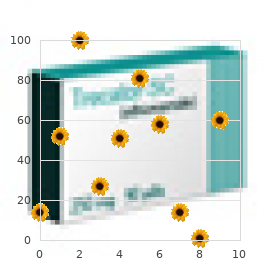
Generic ketoconazole 200 mg overnight delivery
Rehabilitation in follow: neurogenic decrease urinary tract dysfunction and its administration. Randomized trial of percutaneous tibial nerve stimulation versus sham efficacy within the remedy of overactive bladder syndrome: results from the Sumit Trial. Utility of sphincter electromyography and sacral reflex research in girls with cauda equina lesions. Lower stomach pressure versus external bladder stimulation to assist bladder emptying in a number of sclerosis: a randomized managed study. Lower urinary tract signs in dementia with Lewy our bodies, Parkinson disease, and Alzheimer illness. The Developmental Process for the Diagnostic and Statistical Manual of Mental Disorders, 5th Edn. Early sacral neuromodulation prevents urinary incontinence after complete spinal twine injury. Brain activity during bladder filling is related to white matter structural modifications in older girls with urinary incontinence. The value of exterior anal sphincter electromyography for the diagnosis of a number of system atrophy. Sacral neuromodulation in practical urinary retention: an efficient way to restore voiding. Dopaminergic mechanisms underlying bladder hyperactivity in rats with a unilateral 6-hydroxydopamine (6-Ohda) lesion of the nigrostriatal pathway. Neurological disorders have many consequences on sexual function, usually dismissed by rehabilitation professionals. Primary penalties refer to the direct penalties of the neurological lesion on sexual operate. Secondary penalties discuss with their influence on different body features concerned in sexuality and side effects of medications. Tertiary impacts refer to psychosocial aspects reducing the entry to social contacts that interfere with sexual relationships. This article explores these various features, beginning with a evaluation of the neural innervation of male and female genitals, adopted by a review of main, secondary, and tertiary penalties of neurological conditions on sexual perform and their treatment. Sensory fibers run via the dorsal penile nerve synapsing with the Orgasm Orgasm is characterized by cardiovascular responses (tachycardia, hypertension, hyperventilation), muscular contractions, and sympathetic discharge (sweating, shivering, purple skin spots) (Masters and Johnson, 1966). Orgasm is typically recommended to be a nonpathological equal of autonomic dysreflexia usually submitted to supraspinal inhibition (Courtois et al. The expulsion reflex is controlled by the sacral segments of the spinal twine mediating the contraction of the bulbospongiosus and ischiocavernous muscular tissues by way of the perineal nerve. The arousal section consists of clitoral erection, congestion of labia majora and minora, and vaginal lubrication. Vaginal lubrication results from vasodilation and vasocongestion of the vaginal epithelium, triggering a stress gradient stimulating transudation of plasma from the vaginal wall to its lumen (Cuzin, 2012; Giuliano et al. Sexual arousal also stimulates contractions of the uterine ligaments, leading to anterior elevation of the uterus, functionally elongating the vagina (allowing stronger but painless thrusts). The plateau phase follows with maximal congestion of the clitoral structure and contraction of the suspensory ligament embedding the clitoral glans underneath the prepuce (allowing stronger nonaversive stimulation). The urethral opening is surrounded by erectile tissue, which mixed with the clitoris and vaginal opening kind the clitoro-urethrovaginal complicated involved in feminine orgasm (Buisson and Fold�s, 2008; Buisson and Jannini, 2013; Fold�s and Buisson, 2009; Jannini et al. Multiple pathways conveying genital sensations to the mind help these numerous expressions of feminine orgasm. Orgasm and Resolution Orgasm is characterized by rhythmic contractions of perineal muscle tissue perceived as clitoral, vulvar, vaginal, and anal pulsations, and by various signs of autonomic discharge, including hypertension, tachycardia, hyperventilation, flushing, shivering, pink pores and skin spots, and the like (Courtois et al. Following orgasm, the decision phase clears out vasocongestion and restores cardiovascular and autonomic responses again to regular (Masters and Johnson, 1966). The notion of sexually stimulated body areas and visible imagery throughout climax are associated with exercise in the parietal lobe and visual cortex (Hostege et al. Independent but overlapping cortical illustration of the clitoris, vagina, cervix, and breast is discovered on the homunculus parietal lobe (Komisaruk et al.
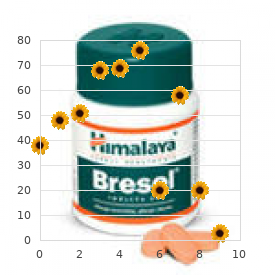
Purchase ketoconazole 200mg on-line
Transcranial stimulation probes cortical physiology, and will offer another strategy to more invasive procedures whereas eligibility in a presurgical evaluation is another potential function. The small number and the heteroge neity of probably underpowered research preclude scientific recommendations. The evidence in each circumstances was considered to indicate definite efficacy (level A recom mendation) by a current consensus on therapeutic applica tions (Lefaucheur et al. This evaluate concluded a possible efficacy (level B) for Parkinson illness, motor defi cits in continual stroke, and negative signs in schizophre nia, and potential efficacy (level C) in hemispatial neglect, tinnitus, auditory hallucinations, focal epilepsy, advanced regional ache syndrome sort I, posttraumatic stress disorder, and cigarette consumption. Larger managed studies will present better proof to specify and probably lengthen the current recommendations. Despite the reports of therapeutic potential, clinical effects are often small and negligible regarding practical independence and quality of life. Theory for the development of neuron selectivity: orientation specificity and bin ocular interplay in visual cortex. Abnormal oscillatory synchronisation within the motor system leads to impaired motion. Theta burst stimulation reduces incapacity through the activities of every day living in spatial neglect. Interactions between inhibitory and excitatory circuits in the human motor cortex. Depression of motor cortex excitability by lowfrequency transcranial magnetic stimula tion. Left versus right repetitive transcranial magnetic stimulation in treating major depression: a metaanalysis of randomised controlled trials. Direct demonstra tion of interhemispheric inhibition of the human motor cortex produced by transcranial magnetic stimulation. Effect of transcranial magnetic stimulation on Parkinson motor function-systematic review of managed clinical trials. Repetitive transcranial magazine netic stimulation for the remedy of amyotrophic lateral sclerosis or motor neuron illness. Modula tion of inputoutput curves by low and high frequency repetitive transcranial magnetic stimulation of the motor cortex. Daily left prefrontal transcranial magnetic stimulation remedy for major depressive dis order: a shamcontrolled randomized trial. Daily left prefrontal repetitive transcra nial magnetic stimulation for acute remedy of medicine resistant melancholy. Multimodal imaging of brain reorganization in motor areas of the contralesional hemi sphere of properly recovered patients after capsular stroke. Bidirectional longterm motor cortical plasticity and metaplasticity induced by quadripulse transcranial magnetic stimulation. Antidepressant results of augmentative transcranial magnetic stimulation: ran domised multicentre trial. Motor system inhibition in doparesponsive dystonia and its modulation by remedy. Shortinterval pairedpulse inhibition and facilitation of human motor cortex: the dimension of stimulus depth. Abnormal plasticity of sensorimotor circuits extends beyond the affected body part in focal dystonia. Safety, ethical considerations, and utility pointers for the utilization of transcranial magnetic stimulation in clinical follow and analysis. Deep mind stimulation effects in dystonia: time course of electrophysiological adjustments in early treatment. Using auditory regular state responses to define the useful connectivity within the tinnitus brain. Correlates of dis ability in a quantity of sclerosis detected by transcranial magnetic stimu lation.
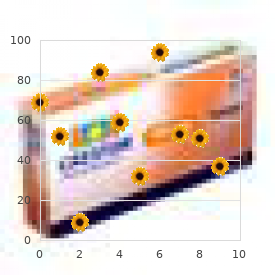
Cheap ketoconazole 200 mg otc
Fatigability Once the weak muscle is identified, the physician ought to determine whether or not it fatigues by testing its fast (saccadic) motion repetitively and its capacity to maintain eccentric eye place with out drift. The use of phenylephrine hydrochloride eye drops beforehand reduces the danger of subconjunctival hemorrhage. Although this test is in the realm of the ophthalmologist, it might be carried out in the office using topical anesthesia and a cotton-tipped applicator, however great care have to be taken to keep away from injuring the cornea. Signs Associated with Diplopia When evaluating a patient with diplopia, the examiner should decide whether or not any of the signs outlined in Box 44. Edrophonium (Tensilon) Test the edrophonium check is discussed intimately in Chapter 109, however a quantity of points are emphasised here. Myasthenic ptosis may be reversed temporarily with software of an ice pack over the affected lid. Treatment Patching (occlusive) remedy is used mainly to get rid of one image through the acute section of diplopia. In children youthful than age 6, each eye should be patched alternately to stop developmental amblyopia. Such young patients must be beneath the care of an experienced ophthalmologist, with common follow-up evaluations. Adult sufferers could put on the patch over whichever eye is extra snug, although some clinicians feel that alternating the patch reduces the incidence of contractures. Botulinum toxin is used with blended success in patients with both comitant and noncomitant strabismus. It could additionally be useful in patients with acute abducens palsies, notably if Acute Bilateral Ophthalmoplegia the causes of acute bilateral ophthalmoplegia are outlined in Box forty four. Chronic Bilateral Ophthalmoplegia the causes of continual bilateral ophthalmoplegia are outlined in Box 44. Extraocular muscle surgery can appropriate long-standing strabismus (comitant or noncomitant). Finally, orthoptic workout routines are of use in sufferers with convergence insufficiency. RelatedDisorders Asthenopia (the visual equivalent of neurasthenia) is characterized by symptoms and signs similar to episodic blurring, watering, itching, diplopia, eyestrain, tiredness of the eyes or lids (especially after reading), sleepiness, and photophobia. Patients with this condition typically manifest exaggerated reactions to regular phenomena such as physiological diplopia, floaters, persistence of afterimages, and difficulty studying nice print. Their signs could additionally be related to accommodative insufficiency, headache, and other asthenic complaints. Care must be taken to exclude true refractive errors, anisometropia, faulty lodging, convergence insufficiency, medicine effects, dry eye syndrome, diabetes mellitus, and incorrectly made spectacles. Although asthenopia normally is psychogenic, a cause for isolated accommodative insufficiency. Management includes a thorough examination, recognition of real abnormalities, and assured and authoritative reassurance. This perception is considerably similar to the extended sensation of movement after an extended sea voyage (mal de d�barquement). Micropsia, defined as the discount in apparent size of an object of a given retinal angle, is the illusion of objects showing smaller than normal. It can happen with optical aberrations corresponding to overcorrection of myopia with minus (concave) spherical lenses, retinal problems. Convergence and accommodation are related to micropsia to keep away from a sense of enlargement as an object gets closer to the attention. Occasionally a disturbance of convergence or lodging, or each, can induce micropsia. Oscillopsia, an phantasm of movement or oscillation of the environment, happens with acquired nystagmus, superior oblique myokymia, different ocular oscillations, and disorders of the vestibulo-ocular reflex. However, in a evaluation of thirteen patients who described triplopia, 11 had ocular motor abnormalities, including third nerve palsies in 5, sixth nerve palsies in two, and internuclear ophthalmoplegia in four (Keane, 2006). Generally, the sufferers reported triplopia when trying in the direction of maximal nystagmus or ocular dissociation, in all probability on account of oscillopsia. Psychogenic triplopia was unusual but recognized by persistence in all directions of gaze and failure to resolve with the pinhole test. Polyopia, the notion of multiple images, regularly is refractive and may be decided by the pinhole check, discussed earlier beneath Diplopia.
References
- Boekstegers P, Giehrl W, von DG, Steinbeck G: Selective suction and pressure-regulated retroinfusion: An effective and safe approach to retrograde protection against myocardial ischemia in patients undergoing normal and high risk percutaneous transluminal coronary angioplasty. J Am Coll Cardiol 1998;31:1525-1533.
- Zhou S, Dorsay KA, Notari EP, et al. Prevalence, incidence, and residual risk of human immunodeficiency virus and hepatitis C virus infections among United States blood donors since the introduction of nucleic acid testing. Transfusion. 2010;50:1495-1504.
- McLaughlin JS, Herman R, Scherlis L, et al. Sterile pericarditis from foreign body. Acute tamponade one month following gunshot wound. Ann Thor Surg. 1967;3:52-56.
- Wirshing DA, Pierre JM, Marder SR, et al: Sexual side effects of novel antipsychotic medications, Schizophr Res 56(1n2):25n30, 2002.
- McPherson ME, Kelly H, Patel MS, et al. Persistent risk of tuberculosis in migrants a decade after arrival in Australia. Med J Aust 2008; 188: 528-531.
- Moon, K., Stukenborg, G.J., Keim, J. et al. Cancer incidence after localized therapy for prostate cancer. Cancer 2006;107: 991-998.
- Bandyk DF, Johnson BL, KirkpatrickAF, et al. Surgical sympathectomy for reflex sympathetic dystrophy syndromes. J Vase Surg. 2002;35:269-277.


